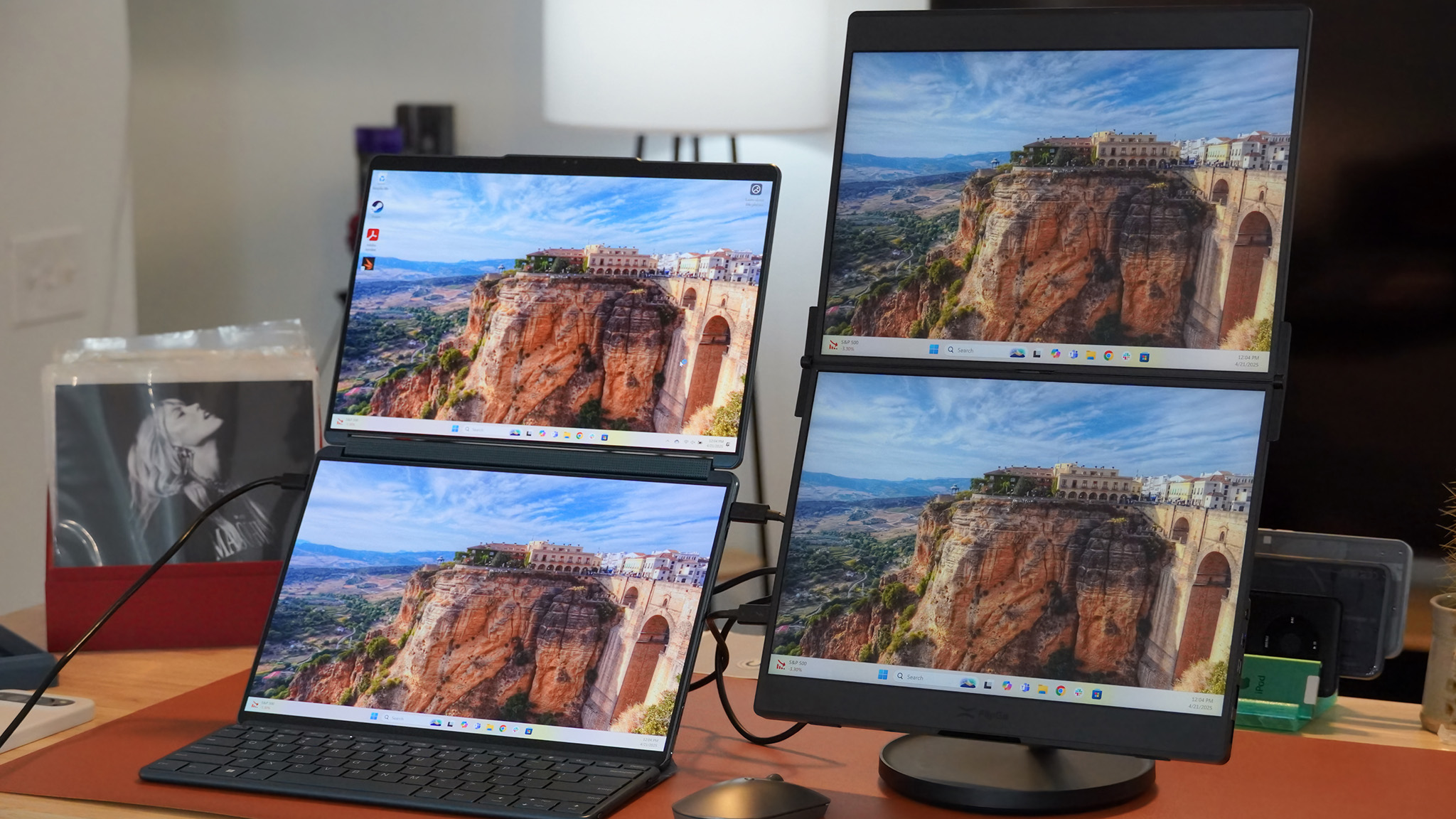Two weeks with a Nest Thermostat
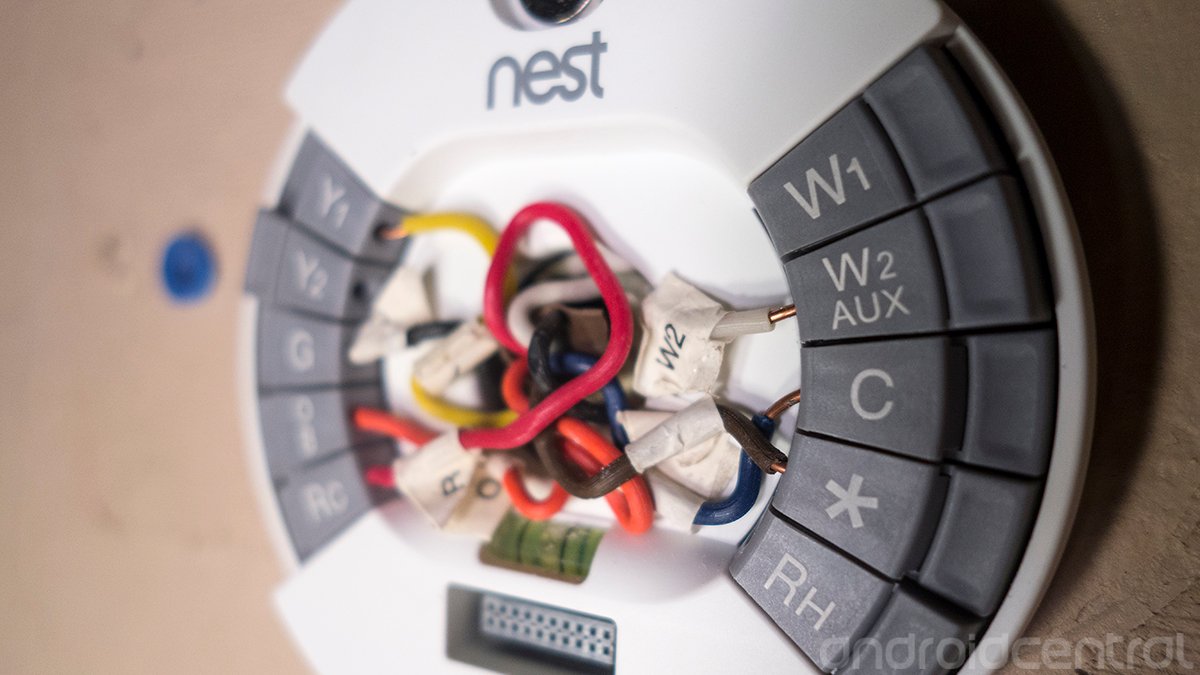
I replaced a perfectly good programmable thermostat with one ridiculously more expensive. But was it worth it?
"It cost how much?"
That's not exactly an uncommon phrase in my house. Only this time, my wife wasn't asking about some phone or tablet I brought home — and promptly placed next to all the other phones and tablets I'd previously brought home. This time it was a futuristic-looking thermostat.
On Jan. 13, 2014, Google announced that it bought Nest Labs for $3.2 billion. What's good for Google is good for Android Central, I imagine. But not having quite that much cash on hand, we settled for buying one single, solitary Nest thermostat for the not-so-low price of $249.
Part of the selling point of Nest is that it learns your heating and cooling habits and adjusts itself accordingly to save you money. That’s a long-term play, and the idea is that Nest's high price is recouped in a year or two.
So we can't speak to any long-term savings just yet. But for those who are thinking about getting into the connected-home game with a Nest, we can offer up a couple weeks's worth of experience and advice.
Installing Nest
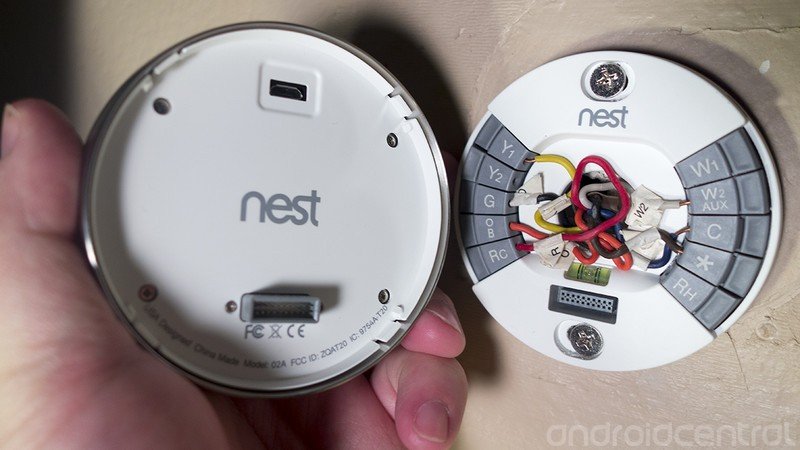
Every home is different, but installing Nest was, for me, almost enjoyable.
Getting a Nest onto your wall and working with your central heating and air (which, this Southerner has to remember, is not a given in every house in the U.S.) turned out to almost be an enjoyable experience. I've swapped out thermostats before, and stiff electrical wires and tiny screws and be a pretty major pain. The Nest handled all this with ease.
Be an expert in 5 minutes
Get the latest news from Android Central, your trusted companion in the world of Android
But let's back up. Chances are your current thermostat has some sort of rectangular footprint, much larger than the round Nest. You might have to do some painting, or some sort of minor wall surgery. I got away with having to having to patch one screw hole (the Nest covers a second), and a little touch-up work. The Nest base has a built-in level (nice touch) and needed just a couple screws. I used some wall anchors for good measure.
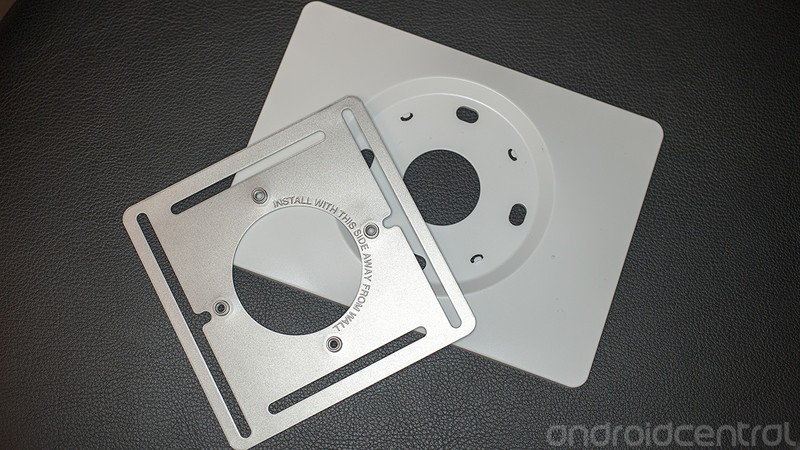
If things get weird, Nest includes a couple options. One is a plate for mounting directly to an electrical box. The other is a larger, rectangular plastic back that can cover any major cosmetic issues on the wall. It's not pretty, though, and you never really see it in any of Nest's promo materials.
As far as the wiring goes, I did a little homework before jumping in to all this. Nest has a nice compatibility checker, and you can email them a picture of your current system to get a better look. (I did so, just to try it, and got a response back in about a day.)
And now is the time when we mention if you're not comfortable with this sort of electrical work, get help from a licensed electrician. And Nest is more than willing to help you find someone.
Reworking the wiring — I'd imagine this will be the most daunting part for some — was a snap, but I had it all labeled from the last swap I did. Nest uses those spring-loaded clips to hold the wires in place — press in to release, let go to clamp down, which is an order of magnitude better than those tiny screw locks. My setup didn't have any issues keeping the unit charged — Nest has an internal battery to sips off the connected power. But, again, read the instructions. Maybe more than once.
All in all? It took about 20 minutes to swap out my (perfectly good) old thermostat for a brand-new Nest after work one evening. Your mileage may vary, of course.
So how's the Nest look?
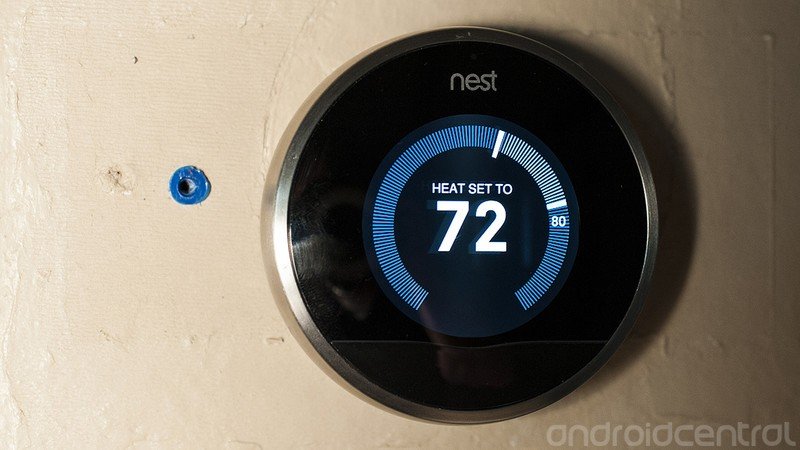
Now that our Nest is up, we've reached issue No. 1: The Nest might be too nice for your wall. (It's also a fingerprint magnet — not something I've had to worry about with pervious thermostats.)
There's a decent chance that Nest actually will be too nice for your wall.
Nest's promo pictures are gorgeous. They're perfectly lit, with a perfect surface on which to display the thermostat. My basic wallboard in a stylish semi-gloss brown, a few dings and the scars of thermostats past. It's pretty dark in that corner of my living room. Not exactly a showroom. (And it's a nightmare to take pictures of.)
Still, Nest makes it look better.
The design really is beautiful, especially when you put it next to, well, just about any other thermostat — even other high-end, Wifi-connected models. It's exactly what you'd expect from a team led by the designer of the original iPod. The color LCD display (320x320, if you were wondering) beats the pants off the monochrome display you're used to.
Nest looks and feels like a $249 Thermostat should.
Using the Nest
Setting up the nest felt a little weird. You've got to connect it to your home Wifi — using the equivalent of a click-wheel for inputting a complex password is not fun — and then left it update its software. That can take a few minutes, so sit back and relax. After that, you're led through the setup questions. They include things like:
- What's your ZIP code? (Nest looks up the weather, so it has an idea of what it's like outside versus what it should be like inside.)
- Set date and time and zip code.
- What kind of home are you in?
- What room is your Nest in?
- Do you have more than one Nest? (They can talk to each other.)
- What kind of AC/heating unit do you have? (If you don’t know, ask.)
- What are the upper and lower temperatures you want to allow the home to reach?
You know, stuff like that. This definitely is a smart thermostat.
Perhaps the biggest change for us has been the Nest's thermometer, which seems to be a degree or so lower than our old one. (Which also matched the indoor/outdoor weather unit that is next to it.) So we feel a little weird turning up the thermostat a couple degrees higher than we're used to, and at times the house has felt a tad warm — but it's also been a pretty cold winter, so that could explain the difference.
Otherwise, we've largely left the Nest to its own devices, to learn our habits. And in that respect, it's working great. It knows when nobody's home, and lets the temperature drift accordingly — no having to program it, or remember to turn the program on. It recognizes when someone's home — like when my eldest daughter gets home from school — even if they don't have a connected smartphone. That's good stuff.
Controlling your Nest when you're not home
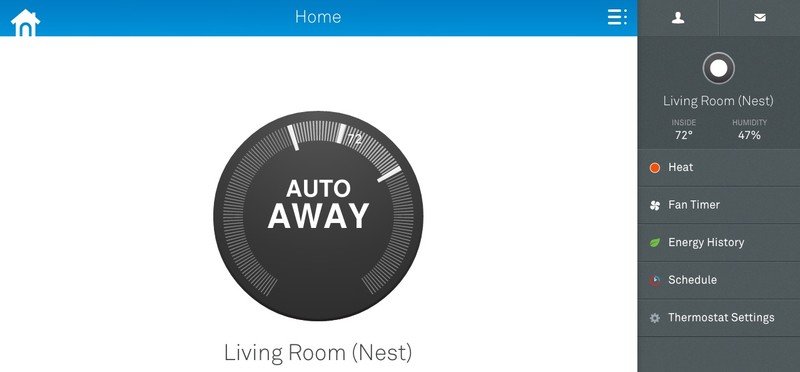
As easy as it's been not touching the Nest and just letting it do it's thing, it's just about as easy to mess with it every damned minute of the day. You've got a few options.
First is with Nest's web interface. There you see a representation of your Nest. Want to turn up the heat before you leave the office for home? Go for it. Did auto-away somehow not turn itself on? You can take care of that here. Every setting on the Nest is available in the web interface.
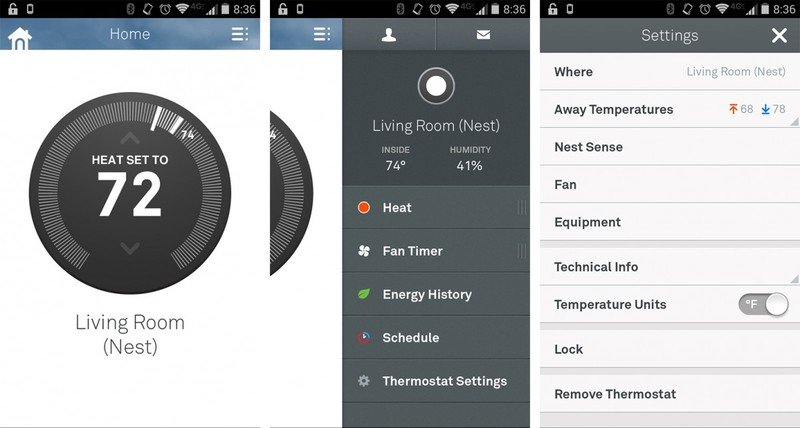
And the same goes for Nest's smartphone apps, too. There are official Android and iOS apps for Nest, and an unofficial app for Windows Phone. There's complete feature parity between the web interface and the apps. What you can do on one, you can do on the other. And the apps are as well-designed and easy to use as the Nest itself.
You were surprised?
The bottom line — is Nest worth the money?
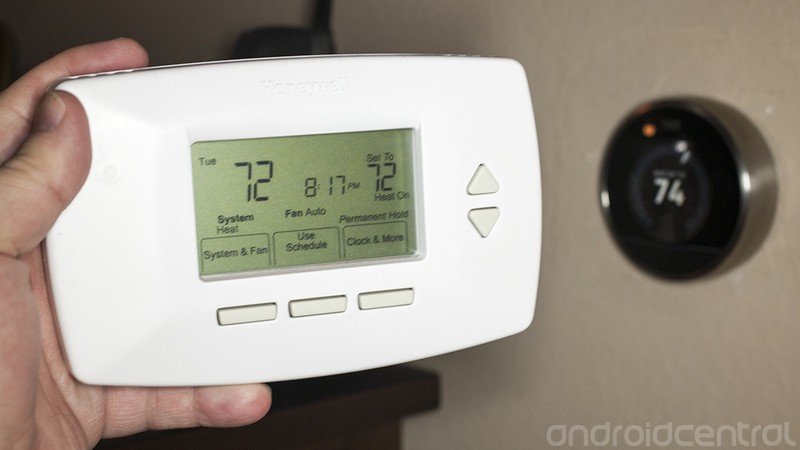
Look, Nest is an expensive toy. There most certainly are cheaper options. I played with a few in stores. But none of them is Nest.
I'm reminded a bit of defunct Nexus Q — a very well-designed device that was lacking in function. It looked and felt like the $300 product it was, but it didn't act like it. Nest doesn't have that problem. It looks, feels and behaves like a premium product. A little flashy? Yeah. You kind of feel like you're showing off. But maybe that's not the worst thing in the world.
Can you heat and cool your home with a lesser thermostat? Sure. But Nest is cool.
While I'm waiting on the first few power bills to see if I'm saving any money, I did find some short-term validation. We've got an annual maintenance plan on our unit at home, which we just had replaced last fall. Our usual technician came by to do his thing, and I asked him to make sure I'd set things up properly. (Remember that it only me 20 minutes to do so.) He found one wire that didn't get seated properly — it was for the emergency heat setting, which we never use anyway. I'll take that.
We haven't touched on the privacy issue. Google bought Nest for $3.2 billion. There are any number of reasons it did so — hardware, engineering or, everyone's favorite theory, the data of what's going on inside a home. I'm not going to tell you whether you should worry about that — you'll have to make up your own mind. But Nest CEO Tony Fadell has said that any changes to the privacy policy would be transparent, and opt-in, meaning that nothing should change without you changing it.
Actions certainly speak louder than words, though. We're in the early days of the connected home still. But this much is clear, after even just two short weeks with Nest — this is a product done right. And if you can cough up the dough, well worth the price.

